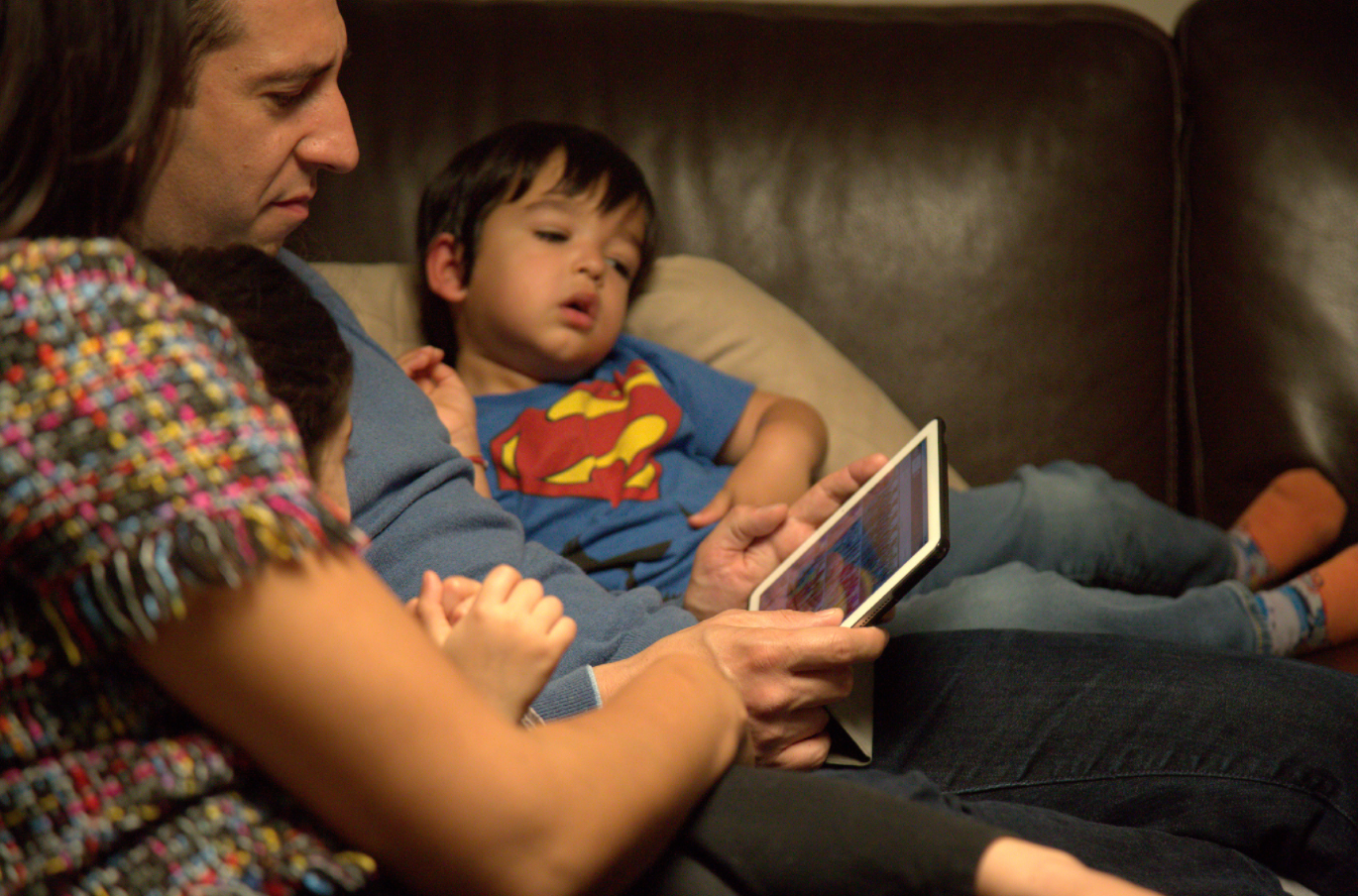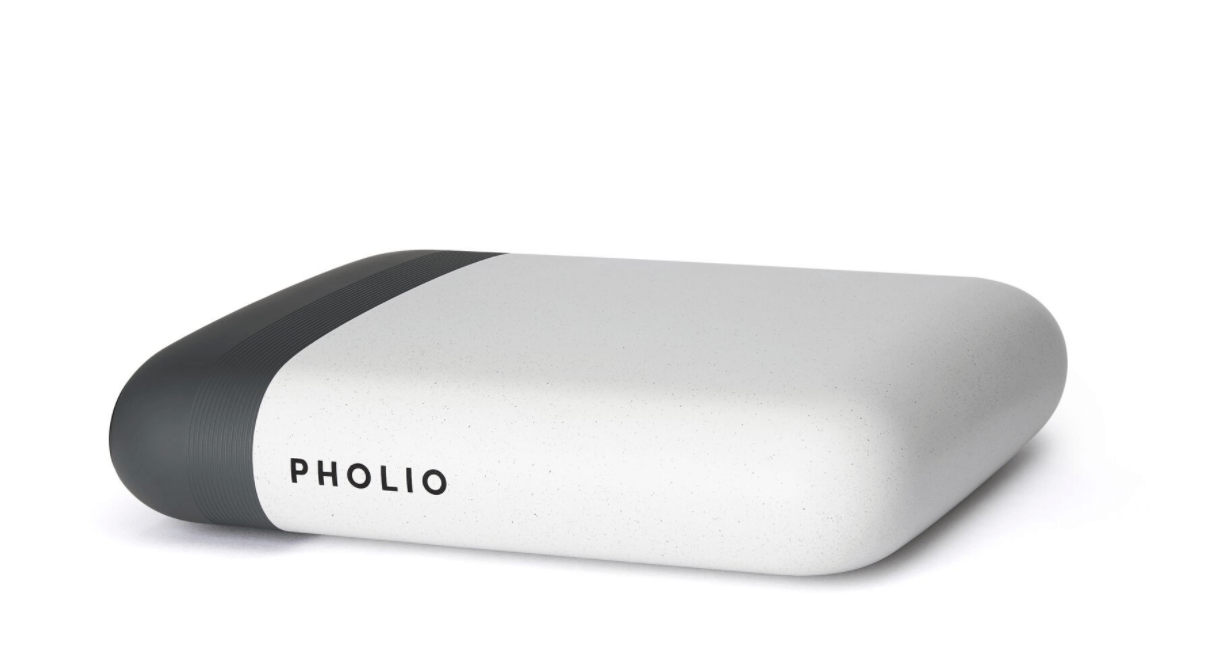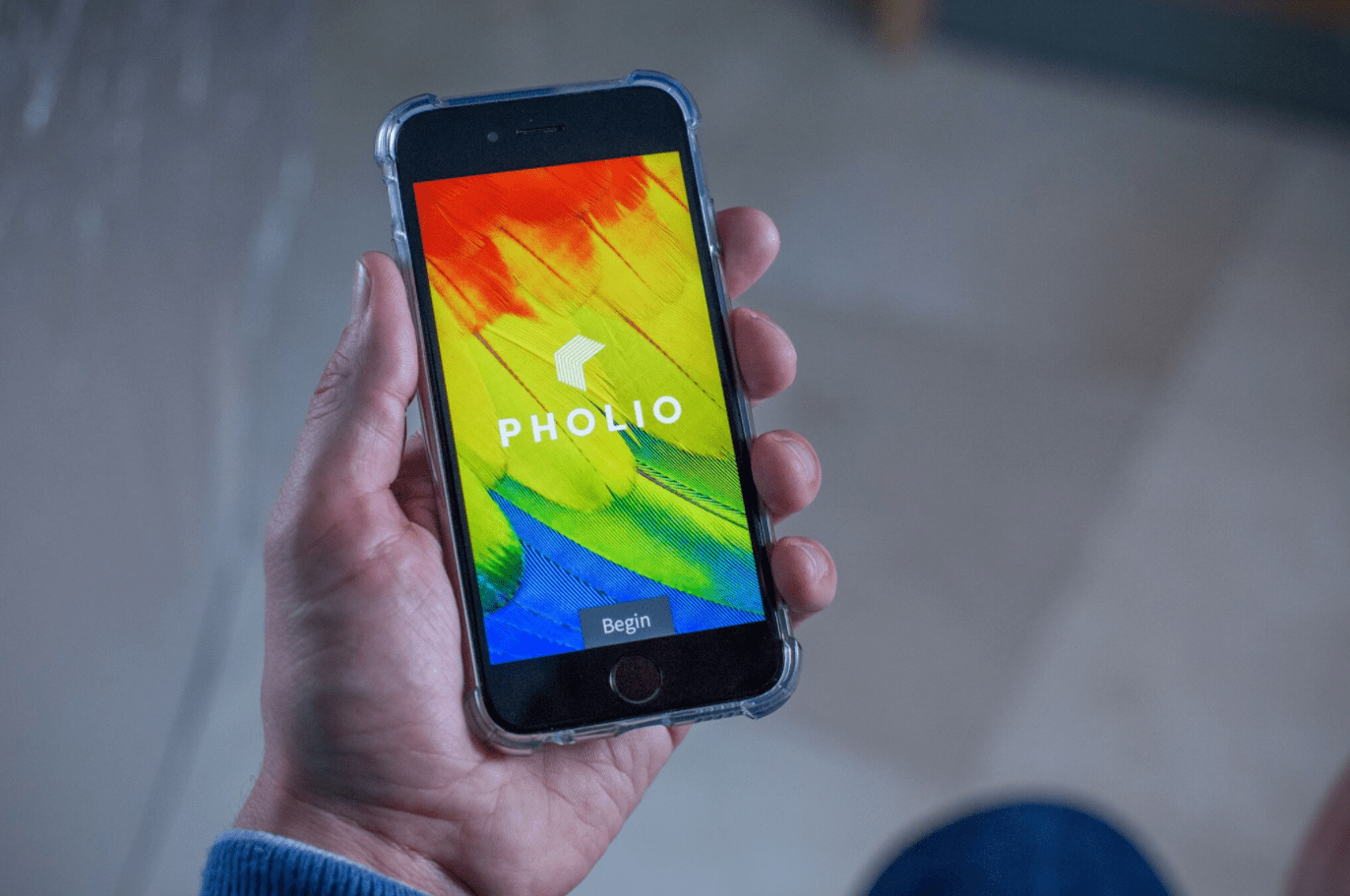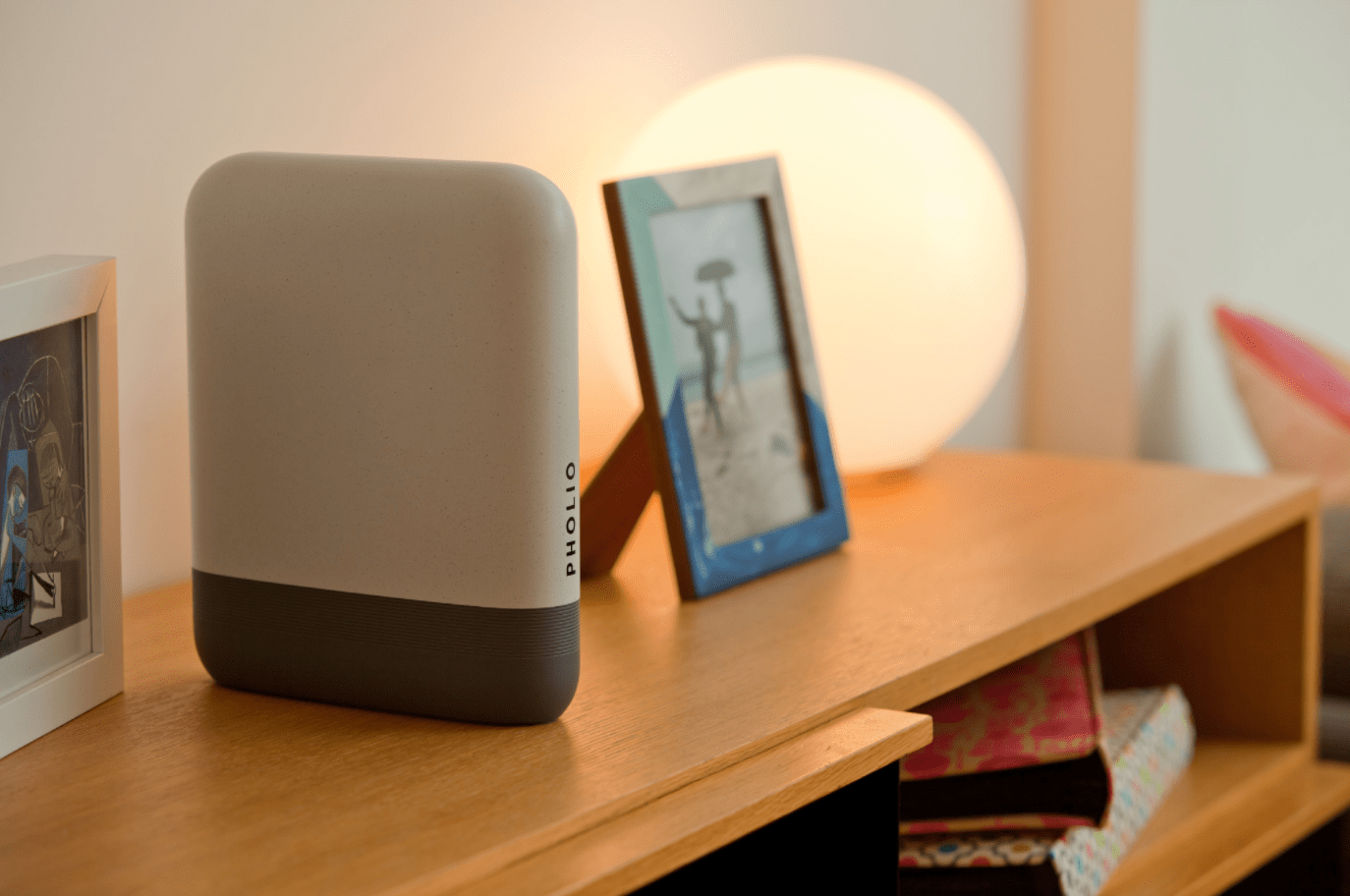
Pholio is a new photo storage device created by founder Simon Randall. Credit: Pholio
A new device called Pholio has been designed to help photographers search through their existing photo library using clever image recognition software. Pre-loaded with 20,000 search terms, Pholio can also learn specific faces, as well as new terms that you search for.
Pholio works by creating high-resolution thumbnails from your existing photo library – whether stored on external hard drives, your computer, memory sticks, memory cards or cloud services – which you can search from both within the home and outside of it.
Researchers at the University of Oxford – world leading authorities in the subject of ‘deep learning’ – have also helped the technology behind how the box analyses, categorises and gets to know your preferences based on your photographs.
In order to raise funds for the production of Pholio, a Kickstarter is currently running – you’ve got until December 9, 2017 to back the project (and pre-order your own Pholio device).
We caught up with Pholio founder Simon Randall to ask him exactly how the technology works, the company’s plans for the future, and just how useful Pholio is for photographers.

Credit: Pholio
How did you get the idea for Pholio?
“The idea for Pholio started off back in 2013 when we began building a private AI software platform to try and automatically select the most interesting moments from a set of videos and images (ie. extracting ‘Kodak moments’ from hours of personal footage). The system we ended up building was so effective at understanding the content in images and video that it was very clear that the same technology could help solve a major issue that I (and most others) have around not being able to quickly and simply access all my old photos and videos.
“The multitude of capture devices and photo storage solutions now available to everyone means that more and more content is being created and stored in more and more disparate locations.
“It was clear that the early deep learning technology platform meant we could create a new solution that would allow everyone to bring their personal collections back under their control and to re-open them for search and discovery.
“Pholio solves an issue I’ve had for a long time which was not having all my memories in one place, under my control with the ability to search for the things I care about (which in my case is my family, friends, holidays and fish).”

Credit: Pholio
How did you get involved with academics from the University of Oxford, and what expertise did they bring to the project?
“Andrew Zisserman and Andrea Vedaldi are World Leading authorities in the area of deep learning. Andrew formed the VGG lab in Oxford and has been a pioneer in computer vision for the last 30 years. We have a long standing relationship with Andrew and Andrea having established previous businesses together in the computer vision space.
“Having Andrew and Andrea on our Technical Board gives us access to two of the greatest minds in the deep learning space; practically this translates to speeding up our ability to solve complex new research problems and access to the latest academic thinking on new methods and developments for content classification and recognition”
What do you think are the advantages of Pholio specifically for photographers?
“Photographers have more photos, in more formats, in more locations of more diverse content. Their needs for search and discovery are an order of magnitude higher than the normal family. With Pholio they can be sure that they can manage their duplicates, quickly locate past shoots and free their collections from their current silo’d files and folders.
“The ability to train Pholio to learn the things you care about is even more powerful for those with more specialist collections.”

Credit: Pholio
What would happen if you ran out of space on a Pholio?
“Although you can use Pholio as a storage device we believe that most users already have good storage solutions in place (cloud services + NAS drives) and will use Pholio as a way of searching through all their collections wherever they are saved. When being used in this manner the standard Pholio box (500GB storage) can support collections of up to 140k images and the Pholio Pro version (2TB) will support collections of up to 560k.
“If a user does want to store the original files on Pholio and has large collections of RAW and/or 4K video files then more memory can be plugged into the back of Pholio. If a user has a very large collection then we could look at more tailored solutions for them (as we do with our enterprise customers).”
Does Pholio indicate where the photos are stored, if thumbnails are coming from multiple photo storage locations? Do the devices that Pholio creates thumbnails from have to be constantly connected?
“Within the settings page the user can see all image locations/libraries that have been indexed, when you view each image you can click to see the path back to the original folder (if Pholio is still connected to the specific drive/folder you can also call the original file).
“Once Pholio has indexed all your collections and stored optimised thumbs in local memory then Pholio can be disconnected from the local network or have the external memory drive unplugged. When disconnected Pholio will still allow you to search your whole collection and will serve results from the optimised thumbnails (more than enough resolution for screen viewing and online sharing); if you then want to get back to the original file you click on the path location to see where it came from and then plug in the correct NAS/card etc.”

Credit: Pholio
Does Pholio automatically update as you take photos, such as services like Google Photos does?
“The Pholio apps allow the user to automatically transfer their Smartphone images and video directly from their phone to Pholio via their home wifi.
“If users add their cloud storage service accounts to Pholio then Pholio will also check daily for any new content that has been uploaded to these in order to index and bring thumbnails onto Pholio.”
The 20,000 pre-loaded search terms can be used with Pholio completely offline. However, if you want to search for something that is not pre-loaded, such as a specific type of animal (Simon uses the example of a hawkfish), then Pholio can search the web for similarly matching images and learn the new term. Alternatively, once you have labelled an image with a specific term, the box can find other similar matches in your library.
Once Pholio has learned a new term from the web, can it keep that offline?
“Yes – once Pholio learns or is taught a new term this stays on the device itself. There are two ways of Pholio learning new terms –
- The user can find an image of a ‘hawkfish’ in their collection (search fish and scroll through or upload an image of a Hawkfish); once found the user can label that one image <Hawkfish> and Pholio will create a new classifier for that term. This can all be done totally offline
- The user can just search on Pholio for a Hawkfish; if it’s an unknown term Pholio will go to the web to source images of what the web thinks a Hawkfish looks like and will create a classifier based on this; Pholio will then use this classifier to look for <Hawkfish> from your personal collection. To run the web search Pholio needs to be connected to the internet but once created it could be disconnected and would then allow future searches for <Hawkfish> totally offline.”

Credit: Pholio
Can Pholio recognise or handle raw files?
“Yes – it can open, convert and cut thumbs of RAW files to store on the box. This allows quick searching of RAW images in order to then locate and open the originals.”
Why should anyone buy a Pholio, rather than use services such as Google Photos or Apple Photos?
“1. Pholio puts ALL your collections back under your control across online and offline
2. Pholio allows you train your system to recognise ALL the things you care about
3. Pholio has been created to put your family photos back at your finger tips with powerful tools for discovery along with search
4. Pholio keeps all your images/thumbnails and new classifiers privately on your box; they are never analysed or used for profiling or targeting
5. Pholio has no on-going fees”

Credit: Pholio
Can I look at photos that are indexed by Pholio from anywhere in the world, or do I have to be on the same local network as it?
“Up to the user; if you want to make your Pholio accessible by yourself (and select others) outside of the home you can do that. We wanted to make sure that you could share your collections with family who are overseas and when you’re not at home etc.”
Is it possible to send links to look at files or folders on my Pholio? If, for example, I’m a wedding photographer who wants to share a folder with a client?
“Users can send specific images from the Pholio application or could give access to other users to search for specific items – we hadn’t thought about sharing links but that’s a simple thing to add if a requirement.
“This isn’t something we’ve specifically considered but again could be looked at. It maybe that photographers could supply their shots from a wedding or event to their clients on a Pholio device for them to keep and explore or setup a specific account on the box for a client and grant them access to use Pholio to navigate all the shots they took.”

Credit: Pholio
What has been the biggest challenge in the creation of Pholio to date, and what will the biggest challenges in the future?
“The biggest challenge has been in shrinking the AI (deep learning) technology that allows Pholio to recognise and classify images down so it can run on lower power hardware whilst still providing the same results as large cloud servers. For Pholio to succeed we needed a system that can run quickly locally and provide near instant search results.
“Through three years of research and development work creating, training and developing new neural network algorithms we have been able to create a system that can provide powerful and fast results -so that users can now just tap a face within an image and instantly see all their images that contain that person.
“The biggest challenge we face now is being able to tell enough people about Pholio and to start getting it into everyones’ hands to enjoy.”

Credit: Pholio
What will happen if you don’t reach the Kickstarter target?
“Kickstarter is a great way of taking pre-orders for new products that allows us to buy components and tooling (to make the final hardware); the downside of this is that the platform has a history of some projects not making it to market and skews the early orders to people who are happy to buy on these types of sites.
“We have been getting very positive feedback from our initial users (along with our enterprise customers) and see great value in the Pholio proposition. We’ve already learned lots from our current backers and followers and know that Pholio genuinely solves a major issue that many of us have. If the Kickstarter campaign does not reach it’s goal we still intend to bring Pholio to market but will need to rethink our market entry approach (if the campaign does not reach it’s target, all backers get their pledge money back).
“I personally (and the rest of the Pimloc team) have been using Pholio for the last 12 months and love it (as do my children). For me I love being able to recall great family moments at the touch of a button and have trained my system to recognise many different fish and corals (a hobby of mine); something that gives me endless enjoyment when I’m on the sofa at home. My young daughter can navigate our family collection by tapping on family faces and swiping around clusters of images (something that text based search prevents her from doing).”
For more information, head to Pholio’s Kickstarter page, where you can learn more about how the device works, and whether it would be a good solution for you.







